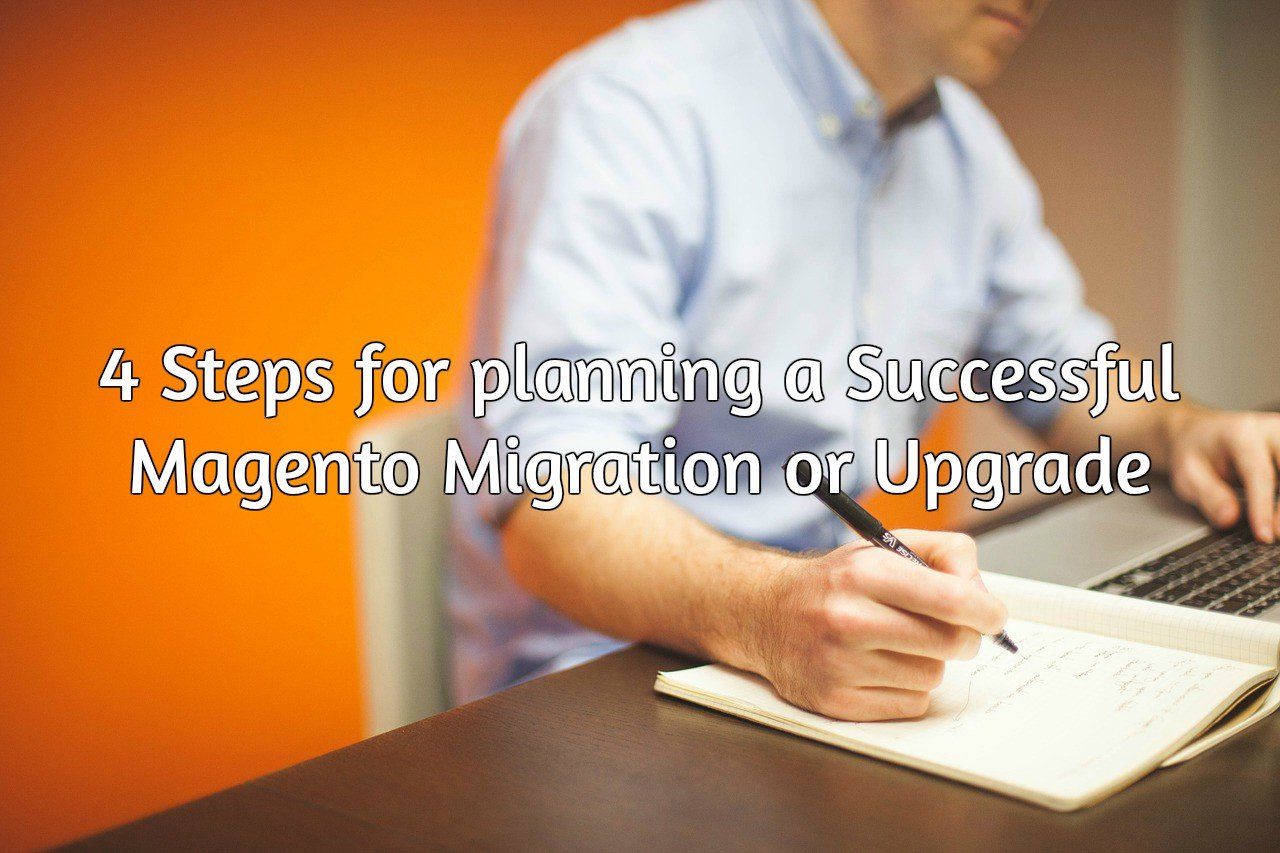
By Tom Deutsch, VP Creative Services at InteractOne
Planning a Successful Magento Migraton or Upgrade
Making the decision to upgrade your site to the latest Magento version or migrating from another platform can be a great idea for your eCommerce business. With any complex technological decision, however, it is best to approach the decision well-armed with information and confidence in in your Magento partner.
Pooled from our experience, we can share some of the common elements of some of the most successful Magento migrations/upgrades we’ve been involved in. While we’d like to take complete credit for the success stories, the truth is that your expectations, preparation and actions are as important to the project as our qualifications and expertise.
Here are the four most important considerations to make when implementing your Magento migration or upgrade.
1. Your Plan for a successful Magento migration
We know what you’re thinking, “My plan? You’re the Magento experts, aren’t you supposed to be the ones with the plan?”
We’ll get to that later.
As the merchant, you have to have a clear idea about the steps involved before you commit to a course of action. It’s also important to know and list out the important features you currently have that you wish to preserve. You must also be open to changing some of your processes and legacy features, especially with respect to a Magento migration or upgrade from a legacy or custom platform.
We promise change will be worth it and easier on your wallet.
Flexibility is a top-line requirement when migrating or re-platforming. Don’t put a brick wall between some internal operational habits that might seem very important or immutable and “the way Magento does things.” Magento works very well along its designed paths – which have a lot of extensions and huge flexibility. But if your requirements are inflexible, you are asking for a lot of added customization and moolah.
2. The Price
Don’t get hung up on fixed price deals. We get it; a fixed
price is attractive. It seems like a great deal that you can budget for. Unfortunately, we know from plenty of experience that you can also be burned by it.
Essentially, a fixed price is a bet placed by both parties. The seller is betting he can deliver services for less than the agreed price and the buyer is betting that he will be happy with the service. Rarely do both parties win this bet when it comes to major website migration and upgrades. InteractOne has completed dozens of projects begun by other developers who promised a price and had no idea of the scope of the work they had undertaken. Sometimes they just stop answering phone calls.
What’s the answer? Obviously, you do not want a vague, open-ended vague project without a budget. The solution to completing a successful Magento migration within a reasonable budget is careful planning, based on a detailed but flexible set of specifications (see Point #1!) agreed to by you and your developer.
3. The Team
What are your in-house capabilities? Design? PHP programming? Server administrator? These are all wonderful capabilities to have in-house, but the question is: how many Magento sites has that resource helped to migrate, build or launch? The hard truth is that a cobbled together team – in-house capabilities plus a Magento freelancer – will end up with a cobbled project.
Make sure your migration/upgrade team includes at LEAST:
- Magento certified back end developer
- Magento certified front-end developer
- Project manager or support team
Make sure your migration/upgrade team has experience with:
- Magento server configuration experience
- Thorough knowledge of the Magento API
- A rigorous process for development staging
Even if they are not experienced in Magento, your in-house development resources can still represent a significant cost savings for your Magento migration, if tasks are planned, delegated and staged carefully. An in-house designer can save your company a lot of money during your Magento migration by providing well-organized branding guidance, powerful images and even mockups if they are familiar with the structure of your chosen Magento theme.
Similarly, in-house PHP or other technical resources can take on responsibilities that their training and know-how permits. This is especially true if your Magento development partner uses agile project management, wherein specific tasks can be assigned to your in-house team with everyone working safely in a version-controlled development environment.
4. THE Plan for a successful Magento migration
The planning step is very difficult and is often overlooked. At InteractOne, it’s the only way we’ll begin a project. We’ve learned from experience that the time we invest in planning is the most transformative and effective way to start a successful Magento migration or upgrade.
We outline, estimate and agree to specific functionality, requirements, customizations, extensions, responsibility and process.
Insist on the total transparency that a comprehensive plan can provide; you don’t want $urprises.
Bottom line for a successful Magento migration, if you know what you’re getting into, are smart with your money, have an experienced Magento team and a game plan everyone agrees on, you’re likely not to fail with your website migration or upgrade.
Guess what? InteractOne is an experienced Magento partner! Contact us to start your successful Magento migration or upgrade process today.
